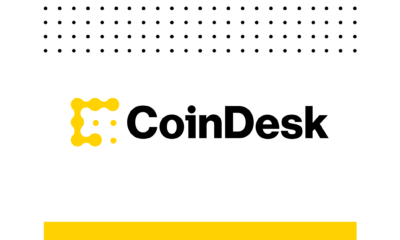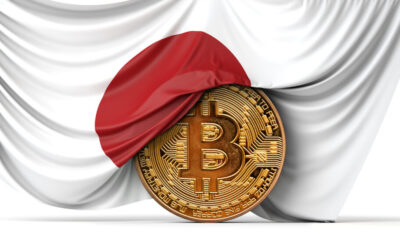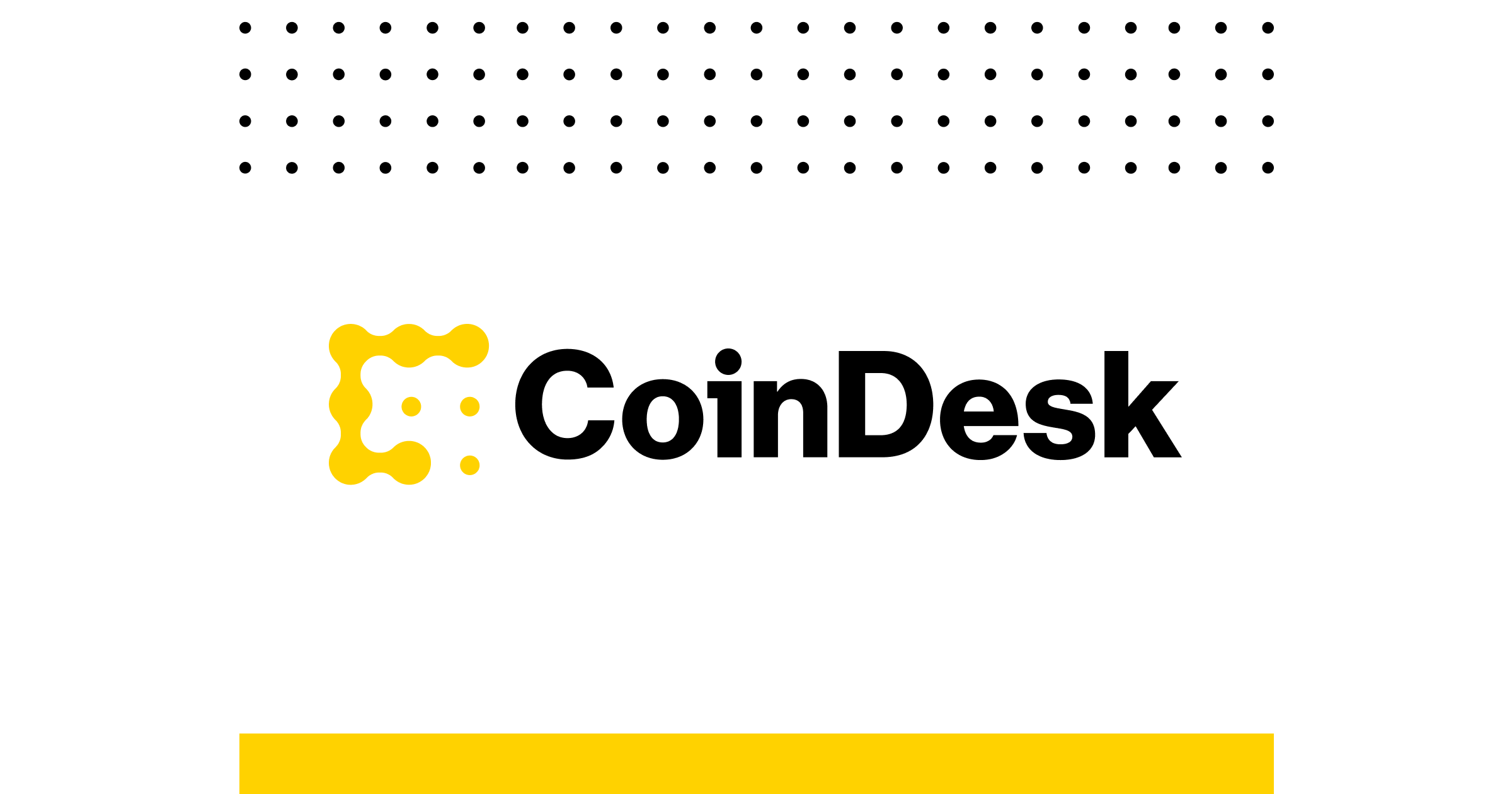News
Tokenized assets hit $50b, projected to reach $2T by 2030
Published
2 months agoon
By
admin

The market for tokenized assets across all classes has now exceeded $50 billion, according to a new report.
According to a recent report from Brickken, titled “RWA Tokenization: Key Trends and 2025 Market Outlook,” the market for tokenized assets across all classes has now surpassed $50 billion, with $30 billion of that total stemming from tokenized real estate.
This growth positions the tokenized market to reach a $2 trillion market cap by 2030, as projected by McKinsey.
One of the report’s key insights is the surge in debt tokenization, particularly in Europe, where Germany leads the way, accounting for nearly 60% of tokenized bond issuance.
The European Investment Bank’s €100 million digital bond on Ethereum serves as a prime example of this trend, driven in part by the European Union’s regulatory clarity.
New entrants are set to join the space in 2025, including companies like Coinbase Asset Management, Glasstower, and Ripple, expanding tokenized liquidity products alongside industry giants such as BlackRock, Franklin Templeton, and UBS, according to the report.
Real estate tokenization
Real estate continues to be a major focus for tokenization due to its traditionally illiquid nature. The process enables fractional ownership, enhanced liquidity, and more efficient collateralization, with over $30 billion in real estate already tokenized or in the pipeline.
Notably, tokenized real estate assets are now being used as collateral on decentralized finance platforms, increasing access to liquidity.
Another key advantage of tokenization is the potential for broadening market access. Traditional real estate investments or private equity funds often require substantial capital commitments, limiting participation to institutional investors or high-net-worth individuals.
Per the report, tokenization allows assets to be fractionalized into smaller, more affordable units, making them accessible to a larger pool of investors.
This approach can democratize investment opportunities, offering retail investors the chance to participate in high-value assets such as commercial real estate without the barriers typically associated with these markets.
The report also highlights the growth of tokenized liquidity products, such as Franklin Templeton’s BENJI fund and BlackRock’s USD Institutional Digital Liquidity Fund, demonstrating the increasing accessibility of tokenized investments across both retail and institutional markets.
Source link
You may like


Tariff Carnage Starting to Fulfill BTC’s ‘Store of Value’ Promise


The cost of innovation — Regulations are Web3’s greatest asset


Best Crypto to Buy as Derivatives Exchange CME Set to Launch XRP Futures


Metaplanet Buys Additional ¥1.92 Billion Worth Of Bitcoin


Here Are Four Signs the Stock Market Has Bottomed, According to Fundstrat’s Tom Lee


Bitcoin dips below $94,000 as ETFs record $3b weekly inflow
Bitcoin
Tariff Carnage Starting to Fulfill BTC’s ‘Store of Value’ Promise
Published
2 hours agoon
April 27, 2025By
admin
April has been a month of extreme volatility and tumultuous times for traders.
From conflicting headlines about President Donald Trump’s tariffs against other nations to total confusion about which assets to seek shelter in, it has been one for the record books.
Amid all the confusion, when traditional “haven assets” failed to act as safe places to park money, one bright spot emerged that might have surprised some market participants: bitcoin.
“Historically, cash (the US dollar), bonds (US Treasuries), the Swiss Franc, and gold have fulfilled that role [safe haven], with bitcoin edging in on some of that territory,” said NYDIG Research in a note.

NYDIG’s data showed that while gold and Swiss Franc had been consistent safe-haven winners, since ‘Liberation Day’—when President Trump announced sweeping tariff hikes on April 2, kicking off extreme volatility in the market—bitcoin has been added to the list.
“Bitcoin has acted less like a liquid levered version of levered US equity beta and more like the non-sovereign issued store of value that it is,” NYDIG wrote.
Zooming out, it seems that as the “sell America” trade gains momentum, investors are taking notice of bitcoin and the original promise of the biggest cryptocurrency.
“Though the connection is still tentative, bitcoin appears to be fulfilling its original promise as a non-sovereign store of value, designed to thrive in times like these,” NYDIG added.
Read more: Gold and Bonds’ Safe Haven Allure May be Fading With Bitcoin Emergence
Source link
Bitcoin Treasuries
Metaplanet Buys Additional ¥1.92 Billion Worth Of Bitcoin
Published
4 hours agoon
April 27, 2025By
admin
Metaplanet Inc. has acquired an additional 145 bitcoin for approximately ¥1.926 billion ($13.6 million), reaching a significant milestone of 5,000 BTC in total holdings. The Tokyo Exchange-listed company executed the purchase at an average price of ¥13,280,472 ($93,327) per bitcoin.
Metaplanet’s bitcoin treasury is acquired for $428.1 million, with an average acquisition cost of $85,621 per coin. “This is a big step forward in our aim to become one of the world’s leading bitcoin holding companies,” Metaplanet CEO Simon Gerovich said in a statement. “We will lead the global bitcoin race from Japan.”
The company’s aggressive accumulation strategy follows its successful capital raise in mid-2024, structured through zero-discount moving strike warrants. The funding was dubbed “Asia’s largest-ever” bitcoin-focused capital raise.
Metaplanet’s proprietary BTC Yield metric, which measures bitcoin-per-share growth, reached 121.1% YTD. The company aims to accumulate 10,000 BTC by the end of 2025 and 21,000 BTC by 2026.
The company’s bitcoin strategy mirrors that of U.S.-based Strategy, with both firms focusing on bitcoin as a treasury reserve asset. Metaplanet now ranks among the top 10 publicly listed bitcoin holders globally.
The acquisition comes as bitcoin trades around $92,800, with institutional interest continuing to grow through various investment vehicles including ETFs and corporate treasury allocations.
Source link
News
Here Are Four Signs the Stock Market Has Bottomed, According to Fundstrat’s Tom Lee
Published
6 hours agoon
April 27, 2025By
admin
Fundstrat’s head of research Tom Lee says there are four big signs backing up the idea that the stock market is in the midst of a bullish reversal.
In a new video update on Fundstrat’s YouTube channel, Lee starts off by noting that on April 24th, a Zweig breadth thrust was triggered on the S&P 500 index.
The Zweig breadth thrust is an indicator that attempts to detect the early stages of a potential bull run by dividing the 10-day moving average of the number of advancing stocks by the total number of stocks.
Lee says that the Zweig breadth thrust has nearly always signaled imminent stock market rallies.
“That has happened 11 times since 1978 and notably, one month, six months and 12 months later, stock markets are always up. And this was triggered on April 24.”
Secondly, Lee notes that the high yield options adjusted spreads (OaS) retraced 50% of its widening on April 23rd. A shrinking of credit spreads – the difference in yield between riskier junk bonds and “risk-free” government bonds – typically signals stability and healthy investor risk appetite.
“That’s a positive development because we are now walking back from a recession risk. If high yield spreads had gone from 500 [basis points] to 1,000, a recession was guaranteed, but instead it’s reversed almost all the widening back to even levels before April 2nd.”
Lee also says that the S&P 500 saw two straight days where 90% of the S&P 500 stocks rallied, an event that has historically led to further upside.
“That means that stocks, within a couple of days apart, had posted two days where the advancing gains were 90% or more. As you can see here, three times since 1979, stocks are higher three, six and 12 months later.”

Lastly, the investor takes note of the volatility index (VIX) – a measure of market volatility based on data from the Chicago Board Options Exchange – closing below the 31 level.
According to Lee, the VIX is now signaling a drop off in future volatility and likely strength for equities.
Follow us on X, Facebook and Telegram
Don’t Miss a Beat – Subscribe to get email alerts delivered directly to your inbox
Check Price Action
Surf The Daily Hodl Mix
 

Disclaimer: Opinions expressed at The Daily Hodl are not investment advice. Investors should do their due diligence before making any high-risk investments in Bitcoin, cryptocurrency or digital assets. Please be advised that your transfers and trades are at your own risk, and any losses you may incur are your responsibility. The Daily Hodl does not recommend the buying or selling of any cryptocurrencies or digital assets, nor is The Daily Hodl an investment advisor. Please note that The Daily Hodl participates in affiliate marketing.
Generated Image: Midjourney
Source link

Tariff Carnage Starting to Fulfill BTC’s ‘Store of Value’ Promise

The cost of innovation — Regulations are Web3’s greatest asset

Best Crypto to Buy as Derivatives Exchange CME Set to Launch XRP Futures

Metaplanet Buys Additional ¥1.92 Billion Worth Of Bitcoin

Here Are Four Signs the Stock Market Has Bottomed, According to Fundstrat’s Tom Lee

Bitcoin dips below $94,000 as ETFs record $3b weekly inflow

Bitcoin Post-Halving Price Performance Is the Worst on Record. Why?

Expert Predicts Start Date For Pi Network Price Pump

GameFi Tokens Show Signs of Life After Gala Games, White House Tie-Up

Bitcoin trades at ‘40% discount’ as spot BTC ETF buying soars to $3B in one week

Bitcoin Continues To Flow Out Of Major Exchanges — Supply Squeeze Soon?

BlackRock’s Bitcoin ETF Sees $643 Million Inflows

DePIN Altcoin Outpaces Crypto Market and Skyrockets by Nearly 44% Following High-Profile Exchange Listing

Solaxy, BTC bull token, and Pepeto gaining momentum as leading 2025 presale tokens

Australian Radio Station Used AI DJ For Months Before Being Discovered

Arthur Hayes, Murad’s Prediction For Meme Coins, AI & DeFi Coins For 2025

Expert Sees Bitcoin Dipping To $50K While Bullish Signs Persist

3 Voting Polls Show Why Ripple’s XRP Price Could Hit $10 Soon

Aptos Leverages Chainlink To Enhance Scalability and Data Access

Bitcoin Could Rally to $80,000 on the Eve of US Elections

Crypto’s Big Trump Gamble Is Risky

Sonic Now ‘Golden Standard’ of Layer-2s After Scaling Transactions to 16,000+ per Second, Says Andre Cronje

Institutional Investors Go All In on Crypto as 57% Plan to Boost Allocations as Bull Run Heats Up, Sygnum Survey Reveals

The Future of Bitcoin: Scaling, Institutional Adoption, and Strategic Reserves with Rich Rines

Ripple-SEC Case Ends, But These 3 Rivals Could Jump 500x

Has The Bitcoin Price Already Peaked?

A16z-backed Espresso announces mainnet launch of core product

Xmas Altcoin Rally Insights by BNM Agent I

Blockchain groups challenge new broker reporting rule

I’m Grateful for Trump’s Embrace of Bitcoin
Trending

 24/7 Cryptocurrency News6 months ago
24/7 Cryptocurrency News6 months agoArthur Hayes, Murad’s Prediction For Meme Coins, AI & DeFi Coins For 2025

 Bitcoin3 months ago
Bitcoin3 months agoExpert Sees Bitcoin Dipping To $50K While Bullish Signs Persist

 Ripple Price1 month ago
Ripple Price1 month ago3 Voting Polls Show Why Ripple’s XRP Price Could Hit $10 Soon

 24/7 Cryptocurrency News4 months ago
24/7 Cryptocurrency News4 months agoAptos Leverages Chainlink To Enhance Scalability and Data Access

 Bitcoin6 months ago
Bitcoin6 months agoBitcoin Could Rally to $80,000 on the Eve of US Elections

 Opinion6 months ago
Opinion6 months agoCrypto’s Big Trump Gamble Is Risky

 Altcoins3 months ago
Altcoins3 months agoSonic Now ‘Golden Standard’ of Layer-2s After Scaling Transactions to 16,000+ per Second, Says Andre Cronje

 Bitcoin5 months ago
Bitcoin5 months agoInstitutional Investors Go All In on Crypto as 57% Plan to Boost Allocations as Bull Run Heats Up, Sygnum Survey Reveals


